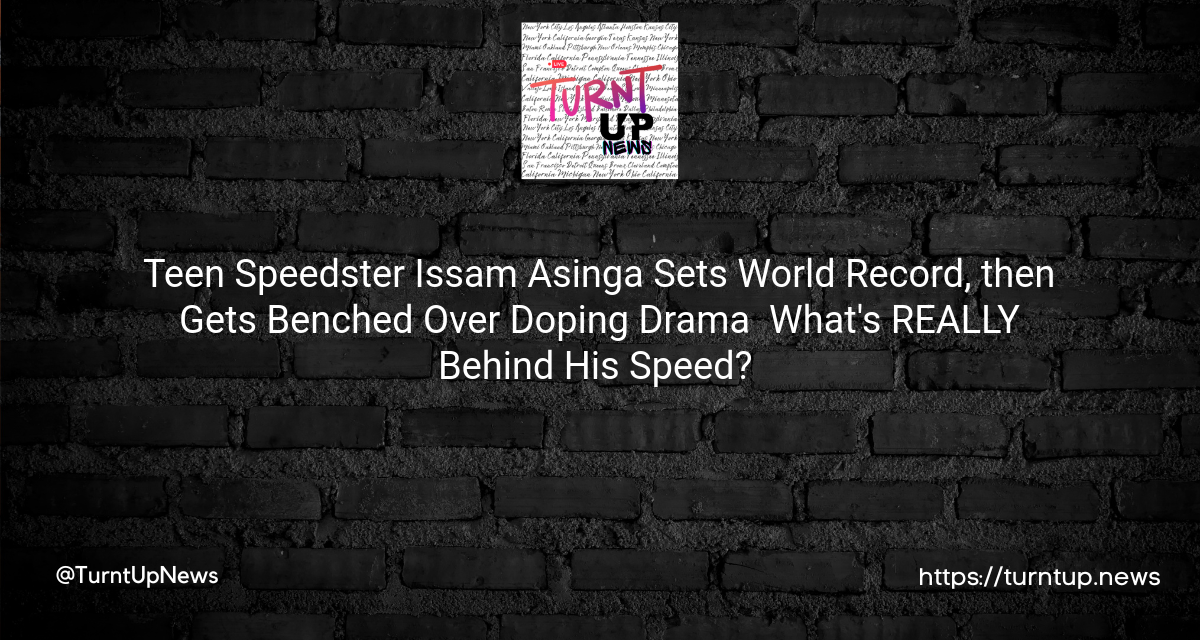🏃♂️💉 Teen Speedster Issam Asinga Sets World Record, then Gets Benched Over Doping Drama – What’s REALLY Behind His Speed? 🚀
TL:DR; Issam Asinga, a young phenom who shot to fame by out-sprinting world champion Noah Lyles, has been provisionally suspended after a doping test came back positive for GW1516, a substance known for building endurance and burning fat. 🤔 He recently set the Under-20 world record with a 9.89-second sprint, but now faces uncertainty about his future. Hold on tight; this story’s as fast-paced as Asinga’s races!
Disclaimer: The information provided here does not constitute health or investment advice, and represents the views of Turnt Up News. Always consult with appropriate professionals for personalized advice.
The Sprinting Star’s Rise…and Fall? 🚀📉
Issam Asinga, an 18-year-old Floridian, was living the dream. Defeating Noah Lyles, the world champion over 200 meters, and setting an Under-20 world record of 9.89 seconds in Brazil, he was on top of the world. But can a meteoric rise come without a downfall? 🤨
Two weeks after his record-breaking run, Asinga was hit with the shocking news: a positive test for GW1516, a substance once aimed at building endurance and burning fat, but later found to cause cancer in rodent tests.
The big question is: Did he know what he was taking? 🧐 And if he did, was the risk worth it?
The Substance Behind the Suspicion 🧪
GW1516, the substance found in Asinga’s test, is no stranger to controversy. Developed with the aim to enhance endurance, it failed medical trials for causing cancer in rodents. The World Anti-Doping Agency even called it a “toxic threat” in 2013.
But what’s it doing in the body of a young, up-and-coming athlete? Is it a deliberate attempt to cheat, or a terrible misunderstanding? 🤔
A Future in Limbo 😬
With his provisional suspension, Asinga’s once-bright future has taken a dark turn. Committed to attending Texas A&M and boasting a sub-20 time in the 200 meters, he was clearly on a path to greatness.
Now, all eyes are on the Athletics Integrity Unit (AIU) as they decide Asinga’s fate. But the AIU isn’t talking – they’ve given no timeline for processing his case. Is this the right way to handle the situation, keeping everyone in suspense? 🕵️♂️
Thought-Provoking Time 🤯
In the high-stakes world of competitive sports, the line between winning and losing is razor-thin. But where do we draw the line between legal enhancements and illicit substances? And how do we make sure young athletes, eager for success, stay on the right side of that line?
Let’s not forget that this isn’t just a story about an individual athlete; it’s a commentary on the broader system that encourages, supports, or perhaps even turns a blind eye to such practices. Should we be questioning the system that potentially fosters such behavior?
So, what do you think? Is Asinga’s story a tale of ambition gone wrong, or a failure of the sporting system to protect its young stars? Is it time to reevaluate the pressures and temptations young athletes face in their quest for glory? Let’s hash it out in the comments! 🎙️





